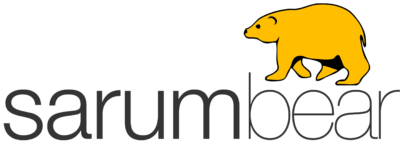I wrote about the SEO service supplied by the SEO companies a few years ago. Although the basics of SEO have not changed the job has now evolved from a singularly-focused practice of boosting ranking. It now involves branding, keyword research, content creation and promotion to attract traffic to a business website.
In a constantly connected digital world, 80% of consumers perform some kind of online research before making a purchase. According to the majority of B2B marketers, SEO generates more leads than any other tactic. If that is the case, shouldn’t you be involved with the process?
Here is a foolproof SEO strategy for you.
The Basics: Technical SEO
Before planning to do anything, it is crucial that you focus on the technical aspects of SEO. Technical SEO ensures that your site is discoverable and easily navigable by the search engines for indexing and crawling purposes. To gain the best results from technical SEO, you need to have done the following, in order of importance:
XML Sitemap
An XML sitemap file tells the search engine that your website is ready to be crawled and indexed. A sitemap is similar to the ‘table of contents’ of a publication. It shows how you are submitting all the pages of your website. You can use a website analytics platform or ‘plug-in’ to create a dynamic sitemap, which then is updated automatically as you make changes to your website.
Robots.txt
Robots.txt file is an extension of your sitemap and informs search engines about which pages or parts of your website are required to be indexed. Search engines tend to crawl through all the content. It also tells which parts of the site you want them to ignore.
Speed
Speed is becoming a very critical factor for the success of a website. Online users are becoming more and more impatient. If a website is not optimized for best performance and speed, it is more likely to have a higher bounce rate. Search engines rank pages and websites based on how fast they load.
Responsiveness
More than half of global internet users use mobile devices for performing a search and the trend has been on the rise. We used to say the websites must be mobile-friendly. We now say websites must be mobile-first. In other words start with the mobile visitor in mind. If your website doesn’t show or perform well on mobile devices, search engines will punish you with low rankings.
SSL
Online security and privacy are among the biggest concerns at present. Naturally, search engines have taken security seriously. If your website isn’t secure and covered under an SSL certificate, you will lose visitors. Modern-day browsers show security warnings to users who are trying to enter websites with no SSL certificate. Make sure to have an SSL certification for your business website.
On-page SEO
Once you have done the technical SEO, you should look at your pages. The days of selective on-page SEO is over. You can no longer just update Meta tags to get great rankings. Search engines are now much smarter. Progress in Artificial Intelligence (AI) allows them to detect websites with contextually-relevant and value-rich content, irrespective of the keyword placement and award them with higher rankings.
Topic & Keywords
The first step to great SEO begins before you actually start to write. You need to know what you want to write, for whom you want to write and what terms or phrases users are searching for. If you have not performed comprehensive keyword research, it is highly improbable that your target audience will be able to find you online.
Keyword research helps in identifying topics for your website by helping you discover the terms, phrases and topics users are searching online. The goal is not about finding keywords to stuff in the content but identifying what users might be interested in.
URL
Website administrators usually ignore the importance of a good URL. URL creates the first impression and simplifies your website directory structure. Including keywords and meaningful phrases in URL by customising generic URL drives a better message home, making a website more attractive to both search engines and humans.
Title
For a web page to rank well, you must have a clear, relevant and unique title tag. You should follow ideal title length rules. Try to include keywords in the title based on the page topic. Using dynamic formulas for title tags that populate page titles is also garnering support and performing well in search engine rankings.
Meta Description
Meta description tells search engines what information to display about a page on your website in search results. You need to have a customised and relevant Meta description that has appropriate keywords. The goal of Meta description should be to assist the title and provide information to users on what to expect on the page in terms of content.
Headings
H Tags or headings on the web page should be well-organized and include the relevant keywords that you are targeting. Using heading tags in a hierarchical and orderly fashion not only gives structure to your page but allows search engines to index the page in a better way. Structure is good for SEO.
Body Copy
Your body copy should include focus keywords in a way that they appear to be naturally flowing. Don’t overstuff keywords into the content of the body text as this can result in being penalised by search engines. This is the biggest chunk of the content which will be indexed by the search engines. So create a clear, relevant and interesting copy for your visitors.
Image Alt Attributes
Alt attributes for images are often forgotten leading to lower search engine rankings. If you fail to account for these, you are missing out of a huge indexing opportunity. Search engines cannot see images and make use of alt text to understand what an image is all about. Adding relevant keywords to the alt text attribute of an image of importance will do wonders for your search engine ranking. Just make sure it’s just as relevant as you would want your website to be, ideally accessible & enriching, even for those using a screen reader.





